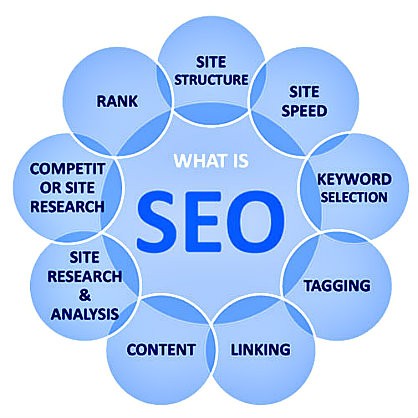The primary focus of search engine optimization is content. Marketers and merchandisers may set up rules in Commerce Cloud that automatically customise the info judgements used to calculate ranking places for every page.
At a far cheaper cost than on other platforms, SEO advice may be adopted on Development, then duplicated to Staging, and lastly to Production. This results in quick lead times that increase ROI.
Website maps
Sitemaps are a fantastic solution to let search engines know how your website is organised. A sitemap is an XML file that identifies all your website's pages, videos, and photos with their connections one to the other. Crawlers from se's like Googlebot utilise these details to find and index your content.
Sitemaps' primary objective would be to aid Googlebot in comprehending the connections amongst the various web pages on your website. This is the reason it's crucial to connect all of your sites, creating a sort of "pathway" that the crawler can follow. However, if you have orphan pages?pages that don't exist in any other links?it could be challenging for Google to get them. Sitemaps are useful in this situation. You might let the crawler find out about these orphan pages so that they are located and indexed by sending a sitemap to GSC.
Demandware, a brand name for the Salesforce commerce cloud platform, has a selection of SEO tools that could enhance your online store's search engine results positioning. The ability to create original product descriptions and responsive layouts are two of these capabilities. Additionally, it contains a particular URL module that enables you to define business rules for pipeline, brand, and category URLs. These rules can offer clear, simple-to-remember URLs that se's can understand, plus they can even supply each page with rule-based meta tags.
Canonical tagging 2.
Salesforce commerce SEO who are not technically savvy appear to be quite confused by canonical tagging. These tags inform search engines concerning the source page that should get all link equity when it comes to SEO. Canonical tags must be used to prevent duplicated content and guarantee that all traffic is sent to the most relevant page.
A rel=canonical link element or an HTTP header are two distinct solutions to utilise the canonical tag. The latter is preferable since it is more dependable. The former requires that you supply both a canonical URL and a full page to reference, making it more error-prone.
Pages that should be canonicalized include duplicate category or collection pages, paginated index pages, and product variants like sizes and colours. If they aren't correctly canonicalized, search engines may get confused and offer diluted results.
There are lots of extra procedures that require be performed to ensure correct canonicalization if you work with Salesforce Commerce Cloud (SFCC), previously known as Demandware. The SEO capabilities provided by SFCC include pre-written page names and descriptions that include keywords and encourage user interaction. While they are a wonderful place to begin, it really is advised that you utilize a Demandware SEO expert to optimise your site for the best outcomes.
3. On-page improvement
SEO is really a general phrase which includes a number of ways of increase internet search engine presence. Off-page and on-page optimisation are both part of it. While link-building activities may be a section of off-page methods, on-page optimisation concentrates on adjustments to website content and HTML that increase the visibility of pages in search engine search engine pages (SERPs). Salesforce commerce SEO entails optimising internal links, meta descriptions, and title tags. Additionally, it needs employing the appropriate Html page and producing unique meta data for each page.
Jaggery Consulting -commerce platform called Salesforce Commerce Cloud, or SFCC, enables companies to create online storefronts which are optimised for se's. This platform's integrated analytics package assists retailers in boosting organic traffic, revenue, and gross merchandise value (GMV).
Businesses may improve their online shop for search engines by using a selection of on-page SEO solutions provided by SFCC. These capabilities include support for canonical URLs, editable XML sitemap files, and editable page names and descriptions. The SFCC platform also offers security safeguards that safeguard private client data.
For the success of an internet company, efficient on-page optimisation is vital. It makes sure clients who are looking for the products or services you provide could find your website. It will allow you to reach a larger audience of prospective clients and could even help your rating on search engine results pages. Additionally, on-page optimisation might assist you in getting greater internet search engine click-through rates.
4. Content planning

A content strategy is really a comprehensive procedure which includes governance, message standards, along with other elements. It targets content planning and management to fulfil user demands and corporate objectives. An intensive content strategy also contributes to enhancing website visitors' overall experience.
Whether you utilize Salesforce Commerce Cloud or another e-commerce platform, a strong content strategy is essential for raising conversions and driving organic internet search engine traffic. As a way to increase the visibility of one's ecommerce site browsing engines, this tutorial offers various ideas for enhancing on-page SEO, optimising URLs, and using canonical tagging.
Along with these tactics, it's critical to check on your e-commerce website is effectively setup. For just about any pages that are no more in use, you may do this by setting up 301 redirects. This will assist in preventing duplicate material and keep maintaining the consistency of one's e-commerce site's structure.
Another suggestion is to design a distinctive 404 page. This would lessen 404 errors in Google Search Console and assist guarantee that visitors are sent to the right page. Establishing page names and meta descriptions that are relevant to your target audience is also crucial. As a consequence, your e-commerce website will rank better and get more organic visitors. Optimise your product photos, and that is all.
